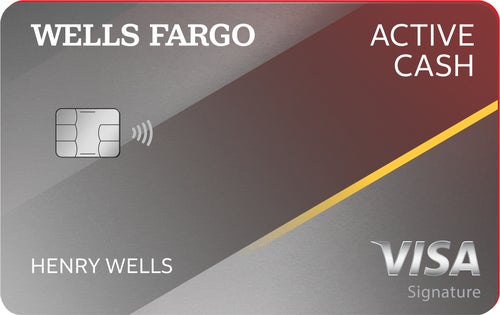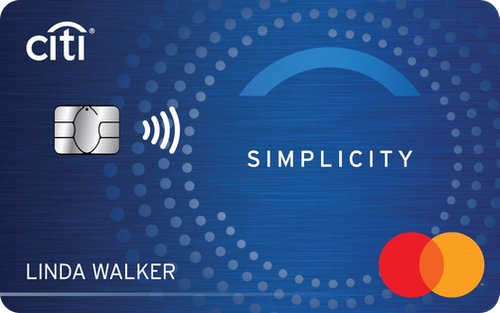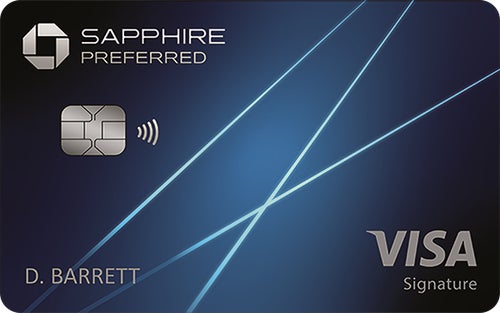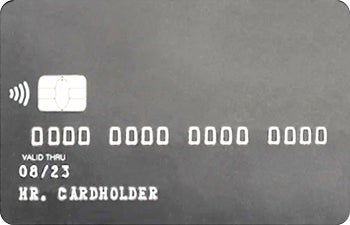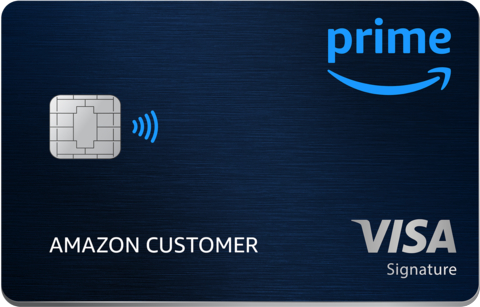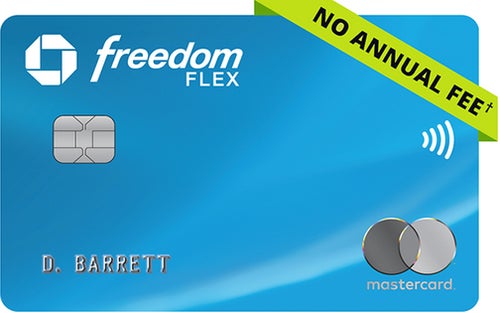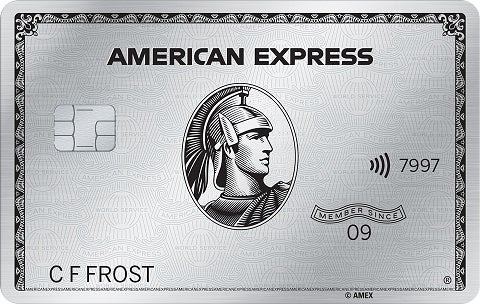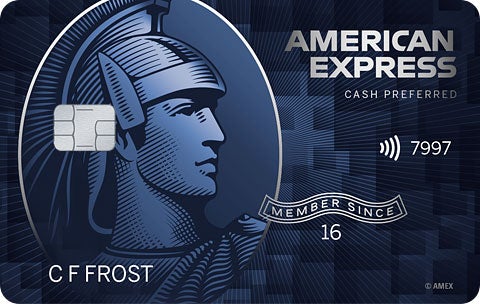Choosing a credit card can be a big decision. Some credit cards are packed with ways to maximize rewards, while others offer long 0% introductory APR periods for new purchases and balance transfers. Others still are designed solely for improving your credit. You may even receive perks like dining credits and airport lounge access with the right card. But none of those features are valuable if you end up with credit card debt.
When you know what benefits you want from a card, how it can fit into your budget and what you need to qualify for it, you’ll be ready to choose the best credit card for you.
The Wells Fargo Active Cash Card offers most people the most helpful benefits overall. The lack of an annual fee makes this card accessible and low maintenance. The 2% cash rewards across your purchases is a competitive rate: While it’s not the highest you’ll find for some major shopping categories like groceries and gas, it gives you one of the best rates on more obscure spending categories like online shopping, services and bills. The introductory APR gives you an opportunity to finance a large purchase or to prevent interest charges with a qualifying balance transfer, and the welcome offer has one of the best spending-to-rewards ratio.
For more details on this card’s benefits, see our full review of the Wells Fargo Active Cash Card.
- Intro Balance Transfer APR
- 0% intro APR for 15 months from account opening on qualifying balance transfers
- Intro Purchase APR
- 0% intro APR for 15 months from account opening
- Regular APR
- 20.24%, 25.24%, or 29.99% Variable APR
- Balance Transfer Fee
- up to 5%, min: $5
The Wells Fargo Active Cash Card offers most people the most helpful benefits overall. The lack of an annual fee makes this card accessible and low maintenance. The 2% cash rewards across your purchases is a competitive rate: While it’s not the highest you’ll find for some major shopping categories like groceries and gas, it gives you one of the best rates on more obscure spending categories like online shopping, services and bills. The introductory APR gives you an opportunity to finance a large purchase or to prevent interest charges with a qualifying balance transfer, and the welcome offer has one of the best spending-to-rewards ratio.
For more details on this card’s benefits, see our full review of the Wells Fargo Active Cash Card.
- Intro Balance Transfer APR
- 0% intro APR for 15 months from account opening on qualifying balance transfers
- Intro Purchase APR
- 0% intro APR for 15 months from account opening
- Regular APR
- 20.24%, 25.24%, or 29.99% Variable APR
- Balance Transfer Fee
- up to 5%, min: $5
The Citi Simplicity* offers both one of the longest introductory balance transfer APR and a competitive balance transfer fee.
Cardholders get nearly two years to pay down a transferred balance, with the card’s offer lasting 21 months before the standard 19.24% to 29.99% variable APR kicks in. It’s introductory balance transfer fee of 3% ($5 minimum) lasts for the first four months -- then it spikes up to 5% ($5 minimum). It’s one of the best combinations on the market.
You can learn more in our Citi Simplicity review.
- Intro Balance Transfer APR
- 0% for 21 months on Balance Transfers
- Intro Purchase APR
- 0% for 12 months on Purchases
- Regular APR
- 19.24% – 29.99% (Variable)
- Balance Transfer Fee
- There is an intro balance transfer fee of 3% of each transfer (minimum $5) completed within the first 4 months of account opening. A balance transfer fee of 5% of each transfer ($5 minimum) applies if completed after 4 months of account opening.
The Citi Simplicity* offers both one of the longest introductory balance transfer APR and a competitive balance transfer fee.
Cardholders get nearly two years to pay down a transferred balance, with the card’s offer lasting 21 months before the standard 19.24% to 29.99% variable APR kicks in. It’s introductory balance transfer fee of 3% ($5 minimum) lasts for the first four months -- then it spikes up to 5% ($5 minimum). It’s one of the best combinations on the market.
You can learn more in our Citi Simplicity review.
- Intro Balance Transfer APR
- 0% for 21 months on Balance Transfers
- Intro Purchase APR
- 0% for 12 months on Purchases
- Regular APR
- 19.24% – 29.99% (Variable)
- Balance Transfer Fee
- There is an intro balance transfer fee of 3% of each transfer (minimum $5) completed within the first 4 months of account opening. A balance transfer fee of 5% of each transfer ($5 minimum) applies if completed after 4 months of account opening.
X1 Card
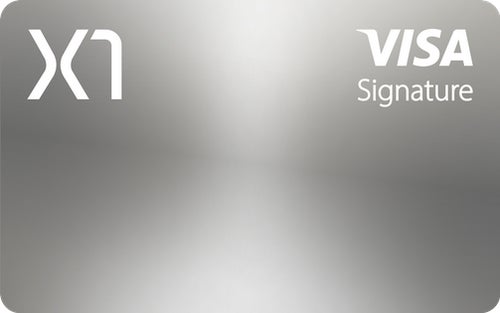
The X1 card operates differently than most -- instead of weighing your credit score to determine your credit limit, it weighs your income. It also provides a higher credit limit than most cards and a rewards program that gets better based on how much you spend. Its earning potential is high as well, providing up to 10x points per dollar at brands like Apple, Macy’s, Nike and Sephora when you shop in the X1 app.
It’s worth noting that how you redeem your rewards will affect their value. For example, you can redeem rewards with a number of popular merchants like Amazon or Costco at a value of 1 cent per point, or for cash back at 0.7 cent each.
Check out our X1 Card review to learn more.
- Intro Balance Transfer APR
- N/A
- Intro Purchase APR
- N/A
- Regular APR
- 15.50% – 27.75% Variable
- Balance Transfer Fee
- 2% of the amount of each transfer.
The X1 card operates differently than most -- instead of weighing your credit score to determine your credit limit, it weighs your income. It also provides a higher credit limit than most cards and a rewards program that gets better based on how much you spend. Its earning potential is high as well, providing up to 10x points per dollar at brands like Apple, Macy’s, Nike and Sephora when you shop in the X1 app.
It’s worth noting that how you redeem your rewards will affect their value. For example, you can redeem rewards with a number of popular merchants like Amazon or Costco at a value of 1 cent per point, or for cash back at 0.7 cent each.
Check out our X1 Card review to learn more.
- Intro Balance Transfer APR
- N/A
- Intro Purchase APR
- N/A
- Regular APR
- 15.50% – 27.75% Variable
- Balance Transfer Fee
- 2% of the amount of each transfer.
The Chase Sapphire Preferred® Card is arguably the best travel card on the market. It’s hard to rival its rewards program -- it expands to everyday categories and has competitive rates on travel. Points are worth $0.01 when redeemed for statement credit, but you get a 25% boost in redemption value if you redeem your points for travel through Chase Ultimate Rewards. This card also offers one-to-one point transfers to Chase’s 14 hotel and airline travel partners, which, if used strategically, can unlock outsized value for your points.
The welcome bonus -- 60,000 points when you spend $4,000 in purchases within the first three months of account opening -- is worth $750 toward travel booked through Chase Ultimate Rewards, as well.
There are no foreign transaction fees and you also get a slew of travel-related perks like baggage delay insurance, trip delay insurance and trip cancellation/interruption insurance. In combination, this is a standout offer for a $95 annual fee.
Read more details in our full review of the Chase Sapphire Preferred.
- Intro Balance Transfer APR
- N/A
- Intro Purchase APR
- N/A
- Regular APR
- 21.49% – 28.49% Variable
- Balance Transfer Fee
- Either $5 or 5% of the amount of each transfer, whichever is greater.
The Chase Sapphire Preferred® Card is arguably the best travel card on the market. It’s hard to rival its rewards program -- it expands to everyday categories and has competitive rates on travel. Points are worth $0.01 when redeemed for statement credit, but you get a 25% boost in redemption value if you redeem your points for travel through Chase Ultimate Rewards. This card also offers one-to-one point transfers to Chase’s 14 hotel and airline travel partners, which, if used strategically, can unlock outsized value for your points.
The welcome bonus -- 60,000 points when you spend $4,000 in purchases within the first three months of account opening -- is worth $750 toward travel booked through Chase Ultimate Rewards, as well.
There are no foreign transaction fees and you also get a slew of travel-related perks like baggage delay insurance, trip delay insurance and trip cancellation/interruption insurance. In combination, this is a standout offer for a $95 annual fee.
Read more details in our full review of the Chase Sapphire Preferred.
- Intro Balance Transfer APR
- N/A
- Intro Purchase APR
- N/A
- Regular APR
- 21.49% – 28.49% Variable
- Balance Transfer Fee
- Either $5 or 5% of the amount of each transfer, whichever is greater.
U.S. Bank Visa® Platinum Card
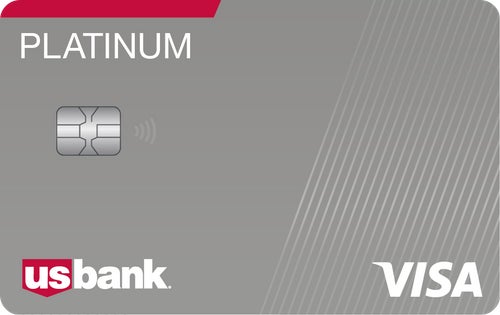
The U.S. Bank Visa Platinum Card offers a whopping 21 billing cycles at 0% introductory APR for purchases and balance transfers (18.74% to 29.74% variable APR thereafter). Though there is no sign-up bonus or rewards program, there is also no annual fee, making this a low-maintenance option.
This a great card if you’re making a large purchase or want to prolong your interest-free payments. It’s also an excellent emergency credit card for times when you need to cover a large expense unexpectedly. Other 0% APR credit cards may have a shorter period of time with the 0% introductory rate, but you may receive other benefits and rewards.
Check out our full review of the U.S. Bank Visa Platinum Card for more information.
- Intro Balance Transfer APR
- 0% intro APR for 21 billing cycles on balance transfers
- Intro Purchase APR
- 0% intro APR for 21 billing cycles on purchases
- Regular APR
- 18.74% – 29.74% (Variable)
- Balance Transfer Fee
- Either 3% of the amount of each transfer or $5 minimum, whichever is greater
The U.S. Bank Visa Platinum Card offers a whopping 21 billing cycles at 0% introductory APR for purchases and balance transfers (18.74% to 29.74% variable APR thereafter). Though there is no sign-up bonus or rewards program, there is also no annual fee, making this a low-maintenance option.
This a great card if you’re making a large purchase or want to prolong your interest-free payments. It’s also an excellent emergency credit card for times when you need to cover a large expense unexpectedly. Other 0% APR credit cards may have a shorter period of time with the 0% introductory rate, but you may receive other benefits and rewards.
Check out our full review of the U.S. Bank Visa Platinum Card for more information.
- Intro Balance Transfer APR
- 0% intro APR for 21 billing cycles on balance transfers
- Intro Purchase APR
- 0% intro APR for 21 billing cycles on purchases
- Regular APR
- 18.74% – 29.74% (Variable)
- Balance Transfer Fee
- Either 3% of the amount of each transfer or $5 minimum, whichever is greater
The Ink Business Cash is hard to beat if you’re a small business owner. It offers a good return for your expenses along with a rewarding welcome bonus and a number of shopping and travel protections.
There is a $25,000 annual spending cap on the 5% and 2% rewards categories to keep in mind, but up to that point it’s one of the most rewarding business cards you could pick. Its rewards are also well-rounded, with a healthy mix of gas station, restaurant, office supply store and internet, phone and cable service categories.
You can learn more in our Chase Ink Business Cash Credit Card review.
- Intro Balance Transfer APR
- N/A
- Intro Purchase APR
- 0% Intro APR on Purchases for 12 months
- Regular APR
- 18.49% – 24.49% Variable
- Balance Transfer Fee
- Either $5 or 5% of the amount of each transfer, whichever is greater.
The Ink Business Cash is hard to beat if you’re a small business owner. It offers a good return for your expenses along with a rewarding welcome bonus and a number of shopping and travel protections.
There is a $25,000 annual spending cap on the 5% and 2% rewards categories to keep in mind, but up to that point it’s one of the most rewarding business cards you could pick. Its rewards are also well-rounded, with a healthy mix of gas station, restaurant, office supply store and internet, phone and cable service categories.
You can learn more in our Chase Ink Business Cash Credit Card review.
- Intro Balance Transfer APR
- N/A
- Intro Purchase APR
- 0% Intro APR on Purchases for 12 months
- Regular APR
- 18.49% – 24.49% Variable
- Balance Transfer Fee
- Either $5 or 5% of the amount of each transfer, whichever is greater.
Discover it® Cash Back* offers a unique sign-on bonus: an unlimited cash-back match at the end of your first year. You don’t even have to reach a minimum spending threshold, like with most other sign-up bonuses -- but you can outearn other credit cards with such bonuses if you spend enough.
You will enjoy 5% cash back up to the quarterly maximums (then 1%) on rotating quarterly categories as you activate them. Some of these quarterly categories include purchases from Amazon.com, grocery stores or gas stations. Discover will also give you 1% cash back on all other purchases. We’ve also collected a few other credit cards with generous welcome bonuses.
Check out more details in our full review of the Discover it Cash Back.
- Intro Balance Transfer APR
- 0% for 15 months
- Intro Purchase APR
- 0% for 15 months
- Regular APR
- 17.24% – 28.24% Variable APR
- Balance Transfer Fee
- 3% intro balance transfer fee, up to 5% fee on future balance transfers (see terms)*
Discover it® Cash Back* offers a unique sign-on bonus: an unlimited cash-back match at the end of your first year. You don’t even have to reach a minimum spending threshold, like with most other sign-up bonuses -- but you can outearn other credit cards with such bonuses if you spend enough.
You will enjoy 5% cash back up to the quarterly maximums (then 1%) on rotating quarterly categories as you activate them. Some of these quarterly categories include purchases from Amazon.com, grocery stores or gas stations. Discover will also give you 1% cash back on all other purchases. We’ve also collected a few other credit cards with generous welcome bonuses.
Check out more details in our full review of the Discover it Cash Back.
- Intro Balance Transfer APR
- 0% for 15 months
- Intro Purchase APR
- 0% for 15 months
- Regular APR
- 17.24% – 28.24% Variable APR
- Balance Transfer Fee
- 3% intro balance transfer fee, up to 5% fee on future balance transfers (see terms)*
The Discover it® Student Cash Back* offers better rewards than a lot of credit cards, though it may be more complicated to navigate. Its bonus categories rotate quarterly and need to be manually activated each time, lest you miss out on any rewards. It also has one of the best welcome bonuses on the market. At the end of your first year, Discover will essentially double the rewards you earn for your first year with the card.
There is a quarterly spending cap of $1,500 to earn the 5% rewards rate (then 1%), but may not be an issue for college students with smaller budgets. It’s a rewarding card to use to build your credit with responsible use before moving on to non-student credit cards.
You can find all the details in our Discover it Student Cash Back review.
- Intro Balance Transfer APR
- 10.99% for 6 months
- Intro Purchase APR
- 0% for 6 months
- Regular APR
- 18.24% – 27.24% Variable APR
- Balance Transfer Fee
- 3% intro balance transfer fee, up to 5% fee on future balance transfers (see terms)*
The Discover it® Student Cash Back* offers better rewards than a lot of credit cards, though it may be more complicated to navigate. Its bonus categories rotate quarterly and need to be manually activated each time, lest you miss out on any rewards. It also has one of the best welcome bonuses on the market. At the end of your first year, Discover will essentially double the rewards you earn for your first year with the card.
There is a quarterly spending cap of $1,500 to earn the 5% rewards rate (then 1%), but may not be an issue for college students with smaller budgets. It’s a rewarding card to use to build your credit with responsible use before moving on to non-student credit cards.
You can find all the details in our Discover it Student Cash Back review.
- Intro Balance Transfer APR
- 10.99% for 6 months
- Intro Purchase APR
- 0% for 6 months
- Regular APR
- 18.24% – 27.24% Variable APR
- Balance Transfer Fee
- 3% intro balance transfer fee, up to 5% fee on future balance transfers (see terms)*
The Prime Visa has a lot going for it. It offers a high cash-back rate for Amazon’s unmatched catalog of products while providing a slew of useful shopping protections for your new purchases. It also has one of the easiest to reach welcome bonuses -- simply get approved for this card to have a $100 Amazon gift card added to your account.
While the card itself doesn’t carry an annual fee, you have to be an Amazon Prime member to qualify for it, a $139 yearly expense. While that’s a bit higher than the average credit card annual fee, if you’re a frequent Amazon shopper, faster package delivery and access to Prime Video might offset this cost.
You can learn more about it in our Prime Visa review.
- Intro Balance Transfer APR
- N/A
- Intro Purchase APR
- N/A
- Regular APR
- 19.49% – 27.49% Variable
- Balance Transfer Fee
- Either $5 or 5% of the amount of each transfer, whichever is greater.
The Prime Visa has a lot going for it. It offers a high cash-back rate for Amazon’s unmatched catalog of products while providing a slew of useful shopping protections for your new purchases. It also has one of the easiest to reach welcome bonuses -- simply get approved for this card to have a $100 Amazon gift card added to your account.
While the card itself doesn’t carry an annual fee, you have to be an Amazon Prime member to qualify for it, a $139 yearly expense. While that’s a bit higher than the average credit card annual fee, if you’re a frequent Amazon shopper, faster package delivery and access to Prime Video might offset this cost.
You can learn more about it in our Prime Visa review.
- Intro Balance Transfer APR
- N/A
- Intro Purchase APR
- N/A
- Regular APR
- 19.49% – 27.49% Variable
- Balance Transfer Fee
- Either $5 or 5% of the amount of each transfer, whichever is greater.
Petal® 2 “Cash Back, No Fees” Visa® Credit Card

Credit card options may be more limited for people with limited or fair credit. The Petal® 2 “Cash Back, No Fees” Visa® Credit Card, issued by WebBank, offers people with a wide array of credit scores the ability to earn cash-back rewards without the hassle of a security deposit or an annual fee. You can get a credit limit between $300 and $10,000, depending on your credit score and other factors. This card also works to incentivize good credit card behavior by rewarding you with more cash back if you make your monthly payments on time.
However, we’ve heard recent reports of Petal automatically downgrading some existing users of the Petal 2 card to the Petal 1 Rise, a card that has worse terms than the Petal 2 and an $8 monthly fee. (Note: The version of the Petal 1 Rise that select Petal 2 cardholders were automatically downgraded to is different from the version of the Petal 1 Rise currently available to new applicants, which carries a $59 annual fee.) While this move doesn’t affect new applicants for the Petal 2 card, which is still available and an excellent card in its own right, you should carefully consider whether a potential unexpected change to the rates and fees of your card in the future is a risk you want to take.
- Intro Balance Transfer APR
- N/A
- Intro Purchase APR
- N/A
- Regular APR
- 18.24% – 32.24% (Variable)
- Balance Transfer Fee
- N/A
Credit card options may be more limited for people with limited or fair credit. The Petal® 2 “Cash Back, No Fees” Visa® Credit Card, issued by WebBank, offers people with a wide array of credit scores the ability to earn cash-back rewards without the hassle of a security deposit or an annual fee. You can get a credit limit between $300 and $10,000, depending on your credit score and other factors. This card also works to incentivize good credit card behavior by rewarding you with more cash back if you make your monthly payments on time.
However, we’ve heard recent reports of Petal automatically downgrading some existing users of the Petal 2 card to the Petal 1 Rise, a card that has worse terms than the Petal 2 and an $8 monthly fee. (Note: The version of the Petal 1 Rise that select Petal 2 cardholders were automatically downgraded to is different from the version of the Petal 1 Rise currently available to new applicants, which carries a $59 annual fee.) While this move doesn’t affect new applicants for the Petal 2 card, which is still available and an excellent card in its own right, you should carefully consider whether a potential unexpected change to the rates and fees of your card in the future is a risk you want to take.
- Intro Balance Transfer APR
- N/A
- Intro Purchase APR
- N/A
- Regular APR
- 18.24% – 32.24% (Variable)
- Balance Transfer Fee
- N/A
This card tops many of our best lists and for good reason: The Chase Freedom Flex* can help you earn rewards on a wide range of spending, thanks to its static reward categories and its quarterly rotating categories.
It’s difficult to find a purchase type that the Freedom Flex doesn’t cover or hasn’t covered in the past. It stands out from other rotating rewards cards by offering a longer window to activate new categories. You’ll even earn retroactive rewards on any eligible purchases. So, if you forget to activate a category until later in the quarter, your past qualifying purchase will still earn the higher rewards rate as long as you activate by the quarterly deadline.
In addition to its strong earning potential, its welcome bonus offers one of the best returns on the spending required to reach it. It also includes a number of useful perks including purchase protection, which covers your new purchases against damage and theft and some sought-after travel protections, including auto rental collision damage waiver and other travel insurance.
You can read more in our Chase Freedom Flex review.
- Intro Balance Transfer APR
- 0% Intro APR on Balance Transfers for 15 months
- Intro Purchase APR
- 0% Intro APR on Purchases for 15 months
- Regular APR
- 20.49% – 29.24% Variable
- Balance Transfer Fee
- Either $5 or 5% of the amount of each transfer, whichever is greater.
This card tops many of our best lists and for good reason: The Chase Freedom Flex* can help you earn rewards on a wide range of spending, thanks to its static reward categories and its quarterly rotating categories.
It’s difficult to find a purchase type that the Freedom Flex doesn’t cover or hasn’t covered in the past. It stands out from other rotating rewards cards by offering a longer window to activate new categories. You’ll even earn retroactive rewards on any eligible purchases. So, if you forget to activate a category until later in the quarter, your past qualifying purchase will still earn the higher rewards rate as long as you activate by the quarterly deadline.
In addition to its strong earning potential, its welcome bonus offers one of the best returns on the spending required to reach it. It also includes a number of useful perks including purchase protection, which covers your new purchases against damage and theft and some sought-after travel protections, including auto rental collision damage waiver and other travel insurance.
You can read more in our Chase Freedom Flex review.
- Intro Balance Transfer APR
- 0% Intro APR on Balance Transfers for 15 months
- Intro Purchase APR
- 0% Intro APR on Purchases for 15 months
- Regular APR
- 20.49% – 29.24% Variable
- Balance Transfer Fee
- Either $5 or 5% of the amount of each transfer, whichever is greater.
The Platinum Card from American Express is often referred to as the best card available, primarily due to the sheer number of premium benefits and annual credits that come with it. You’ll just want to make sure you can make good use of these perks to justify the steep $695 annual fee.
American Express advertises that you can get up to $1,500 in value from the myriad of annual benefits it offers. Annual credits include up to $200 in statement credits for incidental airline fees at one qualifying airline, up to $200 statement credit for select prepaid Fine Hotels + Resorts® or The Hotel Collection booked through American Express Travel (The Hotel Collection requires a minimum two-night stay) and up to $200 in Uber Cash for rides and food in the U.S. (and up to $200 in Uber Cash for rides and food in the U.S. (up to $15 Uber Cash each month, plus an additional $20 in December).
Otherwise, its rewards are relatively lackluster, especially compared to its high price tag. But if you travel often, it’s worth considering.
You can find the complete list of benefits in our review of the Platinum Card from American Express.
- Intro Balance Transfer APR
- N/A
- Intro Purchase APR
- N/A
- Regular APR
- See Pay Over Time APR
- Balance Transfer Fee
- N/A
The Platinum Card from American Express is often referred to as the best card available, primarily due to the sheer number of premium benefits and annual credits that come with it. You’ll just want to make sure you can make good use of these perks to justify the steep $695 annual fee.
American Express advertises that you can get up to $1,500 in value from the myriad of annual benefits it offers. Annual credits include up to $200 in statement credits for incidental airline fees at one qualifying airline, up to $200 statement credit for select prepaid Fine Hotels + Resorts® or The Hotel Collection booked through American Express Travel (The Hotel Collection requires a minimum two-night stay) and up to $200 in Uber Cash for rides and food in the U.S. (and up to $200 in Uber Cash for rides and food in the U.S. (up to $15 Uber Cash each month, plus an additional $20 in December).
Otherwise, its rewards are relatively lackluster, especially compared to its high price tag. But if you travel often, it’s worth considering.
You can find the complete list of benefits in our review of the Platinum Card from American Express.
- Intro Balance Transfer APR
- N/A
- Intro Purchase APR
- N/A
- Regular APR
- See Pay Over Time APR
- Balance Transfer Fee
- N/A
U.S. Bank Altitude® Go Visa Signature® Card
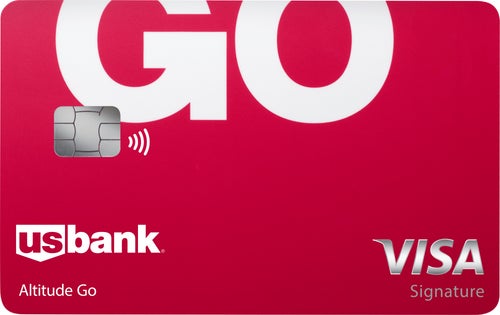
The U.S. Bank Altitude Go has one of the best rates for dining rewards we’ve seen on a credit card without an annual fee. And while earning rewards for eating out is arguably its best feature, its other rewards for gas stations, streaming services and grocery stores are competitive with the best flat-rate cash back cards available.
You’ll also get an introductory purchase and balance transfer APR and an annual $15 streaming credit to essentially knock out one of your subscription costs. There’s plenty of value here for people who eat out often and those who love to order in and stream their favorite shows.
- Intro Balance Transfer APR
- 0% intro APR for 12 billing cycles on balance transfers
- Intro Purchase APR
- 0% intro APR for 12 billing cycles on purchases
- Regular APR
- 20.24% – 29.24% (Variable)
- Balance Transfer Fee
- Either 3% of the amount of each transfer or $5 minimum, whichever is greater
The U.S. Bank Altitude Go has one of the best rates for dining rewards we’ve seen on a credit card without an annual fee. And while earning rewards for eating out is arguably its best feature, its other rewards for gas stations, streaming services and grocery stores are competitive with the best flat-rate cash back cards available.
You’ll also get an introductory purchase and balance transfer APR and an annual $15 streaming credit to essentially knock out one of your subscription costs. There’s plenty of value here for people who eat out often and those who love to order in and stream their favorite shows.
- Intro Balance Transfer APR
- 0% intro APR for 12 billing cycles on balance transfers
- Intro Purchase APR
- 0% intro APR for 12 billing cycles on purchases
- Regular APR
- 20.24% – 29.24% (Variable)
- Balance Transfer Fee
- Either 3% of the amount of each transfer or $5 minimum, whichever is greater
The Blue Cash Preferred from American Express offers the best cash-back rate for purchases made at U.S. supermarkets (though there is a spending threshold) and for select U.S. streaming subscriptions. It also has strong rewards for U.S. gas station purchases and for transit.
Its $95 annual fee ($0 intro for the first year) hardly puts a dent in its earning potential. If you spend as little as $1,600 on groceries at U.S. supermarkets annually (most people will likely spend much more) you’d earn enough rewards to cover the fee, without considering its U.S. gas station and select U.S. streaming rewards. The card essentially pays for itself and then some.
You can find all the details in our Blue Cash Preferred review.
- Intro Balance Transfer APR
- 0% on balance transfers for 12 months
- Intro Purchase APR
- 0% on purchases for 12 months
- Regular APR
- 19.24% – 29.99% Variable
- Balance Transfer Fee
- Either $5 or 3% of the amount of each transfer, whichever is greater.
The Blue Cash Preferred from American Express offers the best cash-back rate for purchases made at U.S. supermarkets (though there is a spending threshold) and for select U.S. streaming subscriptions. It also has strong rewards for U.S. gas station purchases and for transit.
Its $95 annual fee ($0 intro for the first year) hardly puts a dent in its earning potential. If you spend as little as $1,600 on groceries at U.S. supermarkets annually (most people will likely spend much more) you’d earn enough rewards to cover the fee, without considering its U.S. gas station and select U.S. streaming rewards. The card essentially pays for itself and then some.
You can find all the details in our Blue Cash Preferred review.
- Intro Balance Transfer APR
- 0% on balance transfers for 12 months
- Intro Purchase APR
- 0% on purchases for 12 months
- Regular APR
- 19.24% – 29.99% Variable
- Balance Transfer Fee
- Either $5 or 3% of the amount of each transfer, whichever is greater.
How our experts recommend choosing a credit card
Experts recommend focusing on your monthly expenses, financial goals and creditworthiness when choosing the best credit card for your wallet.
Know if you’ll qualify before you apply
Before you start shopping for a card, you should know what your credit score is. A credit score is how lenders can tell your risk level as a borrower. Lenders view a higher credit score as an indication that you’ll pay back money you borrow regularly. Basically, the higher your score, the more responsible you look.
You should only consider a credit card if you can meet the credit score requirements, said Beverly Harzog, a credit card expert and author of The Debt Escape Plan and Confessions of a Credit Junkie.
“You don’t want to apply for a credit card that you can’t possibly get approved for,” she said.
For example, while travel cards can be rewarding and lucrative, you typically need a good or excellent credit score to qualify. That’s a FICO score of 670 to 850.
Applying for a card that you don’t qualify for can impact your score and approval odds if you’re applying for too many cards at once. “Every time you apply for a card, it’s a hard inquiry on your credit report which can temporarily lower your credit score,” said Harzog.
If your score isn’t where you need it to be for the credit card you want, you can either work on raising your credit score before applying for the card or look for a credit card with a lower credit score requirement.
Match a card to your financial habits
Next, consider your financial habits and try to match them with credit card features that will help you stay on track -- if you’re goal-oriented, you might want to choose a card that lets you earn a welcome bonus with your regular spending, for example.
If you already have a credit card, consider how you manage that card when looking for the next one, said Gerri Detweiler, a credit card expert and member of the CNET Money expert review board.
“Do you tend to carry a balance or are you someone who uses your credit card almost like a debit card and you always pay the balance in full?” Detweiler said. “That will help you determine whether the interest rate is important to you.”
You should aim to pay your statement balance in full and on time each month to avoid interest and only charge what you can afford -- especially since interest rates are still high and making credit card debt more expensive. But if there’s a chance you’ll carry a balance, keep the card’s variable interest rate in mind.
Compare the value the cards can offer you
After narrowing down your list to cards you qualify for and those that complement your spending habits, think about the value you want from the card and how you want to realize it.
You may choose a flat-rate cash-back card to earn rewards on every purchase. Or you may be more interested in a credit card that offers points or miles toward travel, airfare or hotel stays. Maybe you want to maximize rewards with a credit card that offers a larger return on your top spending categories -- such as gas, travel and dining.
“You will find that points will take you further than cash back -- it’s typically worth more when you are trading in points,” said Shonda Martin, a credit card expert. “However, if you are not chasing the typical benefits of a rewards credit card like travel and free experiences, then cash back will be fine.”
Credit cards that offer rewards usually charge higher interest rates than credit cards that don’t have rewards programmes. They may also come with an annual fee. If there’s a chance you’ll carry a balance, the interest charges could wipe out any benefits you get from points or cash-back rewards you earn.
Pros and cons of credit cards
Pros
Build credit through responsible use
Earn rewards on your top spending categories
Cardholder perks, such as complimentary memberships and travel protections
Access to funds in case of emergency
Increased security when making purchases
Convenient to use, especially if traveling overseas with a no-foreign-transaction-fee card
Cons
Potential to overspend, leading to debt
Annual fees for certain cards
High interest charges if you don’t pay the monthly statement balance in full
Fees for late payments, cash advances and more
New to credit cards? Here’s what you need to know
If this is your first time applying for a credit card, you likely have a lot of questions about how credit cards work and who can get one. We’ll cover the basics here.
How do credit cards work?
A credit card is a personal credit account that allows you to make purchases upfront with money you’re borrowing from the credit card issuer. You may earn rewards or perks as a cardholder in exchange for your spending, depending on the card.
The issuer will use your credit score, income and other factors to determine your approval and credit card interest rate (also known as APR). The card issuer will determine your interest rate and credit limit when you’re approved.
You have to pay back any charges you put on your credit card. If you don’t pay off your credit card in full by the due date, the balance will accrue interest. You’ll most likely pay interest on your account’s average daily balance, including the charges you’ve paid. Interest charges and fees are how the credit card issuer makes money.
Who qualifies for a credit card?
You’ll need to be at least 18 years old to qualify for a credit card, but issuers may have other requirements. You also have to be a US citizen or legal permanent resident to qualify for most cards issued in the United States. You’ll also need to have a physical address and Social Security Number. You must also have any bankruptcy or foreclosure proceedings concluded.
Generally speaking, the better the benefits, the more requirements you’ll need to meet for approval. Credit cards with attractive rewards programs or cash-back rewards typically require better credit than those with fewer perks and rewards. Your credit limit and interest rate will also depend on your qualifications -- the more you can show you’ll repay your debts, the more likely your lender will offer a higher credit limit and lower interest rate.
When you submit a credit card application, you’ll need to provide personal information that will help creditors decide whether to approve your application and the terms they’ll offer. Among the factors that they may use to decide your creditworthiness are your income and your credit score.
Your credit score is determined by several different factors, including your payment history, age of credit accounts, number of credit accounts and credit utilization -- how much of your overall credit you’re using.
Your credit score is based on your credit reports from the three major credit bureaus -- Equifax, TransUnion and Experian. Credit cards are one way to start building your credit history, but student loans, auto loans and mortgages also count toward your credit score. Your lenders will report your behavior to these bureaus, which can harm or help your credit score.
If you have poor or fair credit when applying for a credit card, you might qualify for credit builder or secured credit cards that are geared toward building credit instead of rewards or benefits.
But good to excellent credit can expand your options for rewards and travel credit cards. These cards also typically offer more perks and higher credit limits.
How credit card interest works
A credit card’s interest rate is called the annual percentage rate, or APR. Credit card issuers typically offer a variable APR, which depends on the federal benchmark interest rate set by the Federal Reserve.
Most credit cards’ interest rates are expressed as a range, like 20.49% to 29.24%. You can find your credit card’s APR outlined in the terms and conditions your issuer provided to you with your card.
Interest charges can add up quickly. While your credit card has an annual percentage rate, interest compounds daily. You can find out how much interest your balance accrues daily by dividing your card’s APR by 365. A card that has an APR of 24%, for example, would have a daily periodic rate of approximately .0657%.
To calculate your monthly finance charge, most credit cards use the average daily balance over an entire billing cycle. Multiply your average daily balance by the daily periodic rate, then multiply that number by the number of days in the billing cycle.
Using the same example as above, let’s say you have an average daily balance of $3,000 for a 30-day month. So your monthly finance charge would be $3,000 x .0657% x 30 = $59.13. Interest charges can add up quickly, so it’s best to avoid them whenever possible.
So long as you treat your credit card like a debit card -- in other words, if you pay off any purchases you make right away -- you won’t have to worry about interest charges.
How credit card rewards work
Some credit cards let you earn rewards based on your purchases. Regardless of the rewards type, the value comes in how you use the card, said Detweiler.
Rewards come in two camps -- cash back and points or miles -- but they work generally the same way.
Cash back
If you don’t want to build a strategy around points and miles for free travel, cash back can be a straightforward way to earn rewards on your purchases, said Martin. Here’s a brief rundown.
- Rewards can typically be redeemed as a statement credit or deposited directly into a bank account.
- Unlike with points and miles, the redemption value of cashback is pretty straightforward: 1% cash back is generally worth 1 cent per dollar spent.
Points and miles
Points and miles are usually geared toward travel purchases but can be redeemed for other purchases. Here’s the difference:
- Points can be used for statement credits, merchandise, gift cards, travel or charity donations. Miles can often be used for much of the same. However, they may not always be worth 1 cent.
- Points and miles can vary in value depending on the card issuer and how they’re redeemed. For example, redeeming for statement credits rather than for travel or transferring points to partners can often net you a lower per-point value.
Types of credit cards
Whether you’re new to credit cards or have multiple cards already, understanding the many different types of credit cards available and what each offers is essential. Here’s how they compare.
Rewards credit cards
Rewards credit cards let you earn cash back, points or miles for purchases you make. Depending on the credit card, you can maximize rewards by spending in certain bonus categories. Rewards cards include cash-back credit cards, travel credit cards and co-branded credit cards with hotels and airlines. Each rewards you for spending within the categories outlined in the card’s reward program.
If you’re willing to build a credit card rewards strategy around your top spending categories, finding a card that offers the best rewards for your spending can mean big savings for your wallet, said Detweiler. “If you’re not interested in that or you don’t have the time to do that, then a card with a good flat reward rate might be a better bet,” she added.
Best Rewards Credit Cards:
- Wells Fargo Active Cash® Card
- Chase Freedom Flex℠
- Blue Cash Preferred® Card from American Express
Rewards programs to know about
- Chase Ultimate Rewards: This credit card rewards system lets you earn and redeem points you’ve earned by using specified Chase cards. You can redeem points for gift cards, cash back, travel and merchant purchases, or transfer them to one of Chase’s travel partners. Some Chase cards offer a higher rate to cardholders who redeem points for travel through the Chase Ultimate Rewards portal.
- American Express Membership Rewards: If your Amex card offers Membership Rewards points, you can use Amex’s portal to redeem them for travel, gift cards, statement credits and transfer rewards to travel partners. The point value will depend on your Amex card and redemption option. The value of Amex points comes from how flexible they are -- you can redeem them for statement credits which will lower your overall account balance, or you can transfer them to one of Amex’s many travel partners where they could be worth much more.
- Wells Fargo Rewards: The Wells Fargo Rewards Program lets you redeem your rewards for travel and gift cards when you use your eligible Wells Fargo credit card. You can redeem your rewards for purchases with participating merchants or use them as a statement credit toward your Wells Fargo credit card, checking account or mortgage.
- Capital One Travel: Capital One Travel is geared toward helping Capital One cardholders save money on travel, especially when booked through the Capital One Travel portal. You can book flights, hotels and rental cars with your rewards.
- Citi ThankYou Points: Citi credit cards earn rewards as ThankYou points, which can be redeemed for cash back, gift cards, statement credits and travel. Citi ThankYou points are typically worth 1 cent each when redeemed for travel through the Citi Travel portal. You can redeem for travel beyond airfare and hotels, too, including theme parks, cruises and other experiences.
- Bilt: Bilt is a newer rewards program but no less competitive than the ones you’re familiar with. And you don’t even need the Bilt Mastercard®️ to earn rewards. Bilt has its own dining program you can use and its own travel portal powered by Expedia. You can also link your Lyft account to your Bilt account and earn rewards that way. Similarly to Amex, the value of Bilt Rewards comes from transferring your Bilt points to hotel and airline partners. Bilt partners include IHG hotels, Marriott Bonvoy, American Airlines and United.
Balance transfer credit cards
Balance transfer credit cards can help you pay off credit card debt with no interest for a limited time if the card offers an introductory APR. These cards give you a window of time -- usually between nine and 21 months -- to transfer a balance from another card and pay off the debt without accruing interest.
For example, you may choose a balance transfer card with a 12-month introductory offer. “During that 12 months, you could really tackle that debt and hopefully, pay it off faster than you would have at a 19.8% interest rate,” said Detweiler.
Balance transfer cards can come in handy in today’s high-rate environment. “If you do need to consolidate some higher rate credit card debt, or if you want to finance a big purchase over several months, there are some good offers out there,” Detweiler added.
But remember you still must always make at least the minimum monthly payment on time. Skipping payments means you could lose the introductory APR period, and you’ll pay interest on any remaining balance you may have.
Most of the best balance transfer cards include a one-time balance transfer fee that’s usually 3% to 5% of the balance, which you should factor into your budget, said Harzog. But, paying this fee will typically be less expensive than paying continuous interest charges on a credit card that carries a high interest rate.
Best balance transfer credit cards:
0% APR credit cards
A 0% APR credit card can help you avoid interest charges completely if you pay off your balance during the introductory period. Taking advantage of a 0% APR credit card introductory offer can come in handy if you’re making a big purchase and need more time to pay off the balance.
And introductory offers are still strong, despite rates rising over the past two years, said Detweiler. But it can be a slippery slope into debt if you’re not careful.
“The most important thing to pay attention to is the fact that it’s time-limited,” said Martin. “A lot of people will see 0% interest and think that means forever when typically it’s either for a limited period of time or it’ll be cut off after a certain dollar amount of spend.”
When that introductory period ends, you’ll start accruing interest on your outstanding balance.
Best introductory APR credit cards
Student credit cards
A student credit card can help college students kickstart their credit-building journey. Generally, college students don’t have an extensive credit history. Student cards don’t always offer competitive terms or rewards, but they’re generally easier to get and can be great for establishing a credit history and learning the basics.
One of the most important things to remember with a credit card is to pay off the purchases you make to avoid carrying a balance. If you revolve a balance from month to month, you’ll have to deal with interest charges, which can quickly add up.
There are often restrictions when applying for a credit card if you’re under the age of 21, said Harzog. You may have to show proof of income, whether it’s a part-time job or a side hustle.
A student card can also help you to access to emergency funds in a pinch.
Best student credit cards
- Discover it® Student Cash Back
- Capital One SavorOne Student Cash Rewards Credit Card
- Bank of America® Customized Cash Rewards credit card for Students
Secured credit cards
Repairing or establishing your credit isn’t always easy. But there are credit cards with lower credit requirements that can help improve your credit score. The most popular are secured credit cards. In lieu of having good credit, you’ll pay a security deposit in order to get your card. The deposit is oftentimes refundable and will typically be used to fund your starting credit limit.
To start building your credit, pay your bill on time each month. Your positive payments will be reported to the three major credit bureaus -- Equifax, TransUnion and Experian -- and will then be reflected on your credit reports.
But a common mistake when rebuilding or building credit is spending too much of your credit limit, said Detweiler. You always want to keep your credit utilization -- how much credit you’ve used versus your full credit line -- under 30%. This is particularly important with secured cards that often have lower credit limits.
If you use your full credit limit, it can ding your credit score, even if you pay your balance off in full, said Detweiler. Instead of putting all purchases on your card, consider charging only a few purchases like gas, a streaming service or one bill.
Most credit card issuers offer secured credit cards, and while some offer rewards and perks, most don’t. Over time the card issuer may consider you for an unsecured credit card and refund your deposit. And if you use a secured card responsibly for 12 to 18 months, you can rebuild your credit as long as the issuer is reporting it to the bureaus, Harzog added.
However, your negative card activity -- like late payments and frequently spending up to your credit limit -- will also be reported.
Best secured credit cards
- Discover it® Secured Credit Card
- Capital One Quicksilver Secured Cash Rewards Credit Card
- Capital One Platinum Secured Credit Card*
Business credit cards
Geared toward business people who travel frequently, business credit cards offer rewards for your expenses and useful perks like free employee credit cards.
There are many business credit cards to choose from -- business travel cards, rewards credit cards that offer points or cash back, or corporate cards for businesses with large expenses.
“A lot of people are trying to start their own endeavors, and the credit card companies are keeping up with that trend and trying to offer products that would really fit that growing market of people who want to become entrepreneurs and business owners,” credit expert Julia Menez said.
You’ll still be on the hook for credit card debt if you don’t pay your bill in full and on time each month. Otherwise, you’ll pay more in interest and fees. And you could damage your business and personal credit scores.
Best business credit cards
- Ink Business Cash® Credit Card
- Ink Business Preferred® Credit Card
- American Express® Business Gold Card
Other types of credit cards
Depending on your spending habits and goals, you may benefit from a category-specific card that still lets you earn rewards on everyday spending. Here are a few popular picks.
Airline credit cards
An airline credit card can come in handy if you’re loyal to one airline. Plus, you may get more flight perks like seat upgrades, lounge access, travel credits and more. But other card choices with flexible rewards may offer similar benefits for more airlines -- especially if you’re paying an annual fee.
But before opening an airline card, consider if a general travel card would be better, said Menez. “I would recommend that most people who are getting into the points game focus first on flexible points like Chase, Amex, Citi, Capital One or Bilt points where you have options to move them to a variety of different airlines.”
Hotel credit cards
Co-branded hotel credit cards are good if you prefer one hotel chain over others because you’ll get more perks and rewards for that brand.
“A lot of the hotel co-branded cards will cost $95 a year, but they’ll come with a free night certificate,” said Menez. “As long as you’re going to stay with that hotel anyway, all hotel nights, with inflation these days, are going to cost more than $95, so that card will pay for itself.”
However, if you prefer to fly or stay with more than one brand, a general rewards card might suit you better. You’ll have more flexibility to book stays with other hotel brands and transfer rewards to the credit card issuer’s travel partners.
Gas credit cards
A gas credit card can help you save a few cents at the pump up to a certain amount each month. Some co-branded gas cards, like the Costco Anywhere Visa® Card by Citi*, require a store or wholesale membership. But if you’re behind the wheel often, the card can be worthwhile to help save money.
Most gas companies provide their own credit cards too, including Shell, BP and ExxonMobil. However, there are more general credit cards that feature a gas bonus category too, among other rewards. These cards provide more flexibility than retail gas credit cards.
Retail credit cards
Also known as store credit cards, are credit cards that are co-branded with a specific brand, like the Target RedCard™. They focus on providing rewards with the brand they’re tied to, along with special perks like two-day shipping or extended returns.
However, retail credit cards tend to have higher interest rates and lackluster rewards programs compared to standard rewards credit cards. But if you don’t have the credit to qualify for a general rewards card, a retail credit card could be worth a look.
How to choose the right credit card for you
Ultimately, the right credit card depends on your goals and preferences. Decide what features you’re looking for: rewards, longer payment periods for a large purchase, credit-building tools, an emergency credit line or other benefits.
From there, you can decide the type of card you’re looking for. You can then use online reviews like those at CNET to further narrow down what terms will work best for you.
| Situation | CNET credit card recommendation |
| Building credit | Capital One Platinum Secured Credit Card |
| Earning travel rewards | Chase Sapphire Preferred® Card |
| Balance transfer | Citi Simplicity® Card |
| No foreign transaction fees | Wells Fargo Autograph℠ Card |
| Large purchases with payment flexibility | Wells Fargo Active Cash® Card |
Should you get a credit card?
A credit card can help you build credit, but only if you do so responsibly. That means avoiding overspending and paying off your balance on time and in full each month. Credit cards also provide a secure method for making payments thanks to their security protections.
“If you’re going to carry a balance, I don’t recommend credit cards at all,” said Harzog. “Because you could just get into trouble so fast. I speak from personal experience -- many years ago when I got out of college and got into debt with many cards.”
It’s important to avoid getting enticed to spend on unnecessary purchases. A good way to do so is to treat your credit card like a debit card. If you don’t have the money to pay off a purchase immediately, reconsider before completing the transaction.
However, credit cards can also help you earn money back on purchases that can help you save in the long run, said Harzog. “But you have to be organized and you have to pay that bill every month when it comes,” she added.
Is it OK to have multiple credit cards?
Experts say it’s fine to have multiple credit cards -- as long as you can manage them responsibly.
“You can get a lot of credit cards and you can still have a really high credit score,” said Detweiler. “It’s more about how you manage them than the number of cards that you have.”
Detweiler recommends shopping around for new credit cards regularly to maximize rewards. “At least once a year, review the cards you have and see what else is out there.”
Note: When you apply for a new card, you may see a dip in your credit score, but the decrease should be small and temporary.
Cards to consider when building or rebuilding credit
When it comes to building credit with a credit card, you have a few options.
- Student credit cards can offer college students the chance to earn rewards while also helping to establish your credit.
- If you’re new to credit and ineligible for a student credit card, a secured credit card, which requires a one-time deposit, is a good way to go, said Harzog.
- If you don’t qualify for a student card and don’t want to pay a security deposit, there are unsecured credit-building cards that may be a better fit.
A credit-building card only helps if you use it responsibly by making on-time payments and not overspending.
If you can’t qualify for your own credit card, consider asking to become an authorized user on someone else’s account. Any positive activity they have can be reflected in your credit scores, although so can their negative activity.
How to build credit
If you’re using a credit card to build your credit, the most important thing you can do is pay your balance before it’s due each month, according to Harzog.
“Pay all your bills on time. Every single bill -- pay them all on time,” she said. “Payment history is 35% of a FICO score.”
It’s also important to keep your debt-to-credit ratio, or credit utilization, lower than 30%. So if you have credit limits totaling $10,000, you’d want to charge no more than $3,000 across all of your credit accounts, even if you pay off your balance each month.
Other ways to build credit include keeping old credit card accounts open -- as long as they’re in good standing.
Using your credit products responsibly will be the fastest way to build credit. And chances are, you won’t have exceptional credit without a credit card, said Martin.
“Unfortunately, that’s just how the system is made. It’s how our credit scores are built,” she said. “Credit is just your ability to borrow money, so in order to show or exemplify you are a great borrower, you have to show that on your credit report. Credit cards are one of the main things that you should use to exemplify great credit use.”
Building credit is not a quick process. While you could see results in six months, rebuilding or establishing a good credit score could also take years.
Read more: Here’s the Secret to Getting a Perfect Credit Score, According to Experts
What happens if I miss a credit card payment?
If you miss a credit card payment, you could face fees, a higher APR and even a lower credit score. How severe the consequences are typically depends on your payment history and the number of missed payments on your account.
Depending on your card, you’ll typically incur a late payment fee of $30 for your first late payment. Missing multiple payments could also lead to additional fees and a penalty APR, a punitive rate much higher than a standard credit card’s APR. It’s typically capped at 29.99%.
However, missed payments typically won’t appear on your credit report for 30 days after the due date, so long as you make the payment before then.
“When you get a new card, make sure that it’s on your radar,” said Harzog. Put a note on your calendar or set up auto-pay for at least the pay minimum payment, she suggested.
How to apply for a credit card
Here’s a step-by-step guide to applying for a credit card. Remember to check your credit report and score before applying.
- Choose a credit card that matches your financial needs, habits and eligibility.
- Visit the card issuer’s website or in-person branch (if one is available) to apply. Remember to use a secure network to protect your personal information.
- Fill out the application with your personal information. You may be asked about your gross income, contact information and Social Security number. If your credit is frozen, you’ll need to temporarily unfreeze it before applying.
- Set up your credit card login information online for easier account access and use your card responsibly.
FAQs
The best credit card for beginners will help you build credit and learn responsible habits, so consider a card that has simple rewards and low fees. The best thing you can do when you get the card is pay off your purchases right away. Once you’ve gotten the hang of things and used your card responsibly for at least a few months, you can apply for more advanced credit cards.
Each credit card issuer offers a wide variety of credit cards for different types of spending -- even cards from the same issuer offer varying benefits. You’ll need to find the card and issuer that best fits your goals and spending habits.
While there’s no definitive answer to how many credit cards you should have, you should only apply for credit cards you can safely manage. If you apply for too many and payments start to slip between the cracks, you’ll likely land in financial trouble.
You also don’t want to apply for too many at once, because each card application temporarily dings your credit score.
You need to be 18 to apply for a credit card, but some credit cards let you add a younger authorized user to reap the benefits of someone’s credit card history.
You’ll need to provide the credit card issuer with the following information when applying for a credit card:
- Full name
- Address
- Phone number
- Social Security number
- Gross income
- Employment status
- Monthly rent or mortgage payment
Our methodology
CNET reviews credit cards by exhaustively comparing them across set criteria developed for each major category, including cash back, welcome bonus, travel rewards and balance transfer. We take into consideration the typical spending behavior of a range of consumer profiles -- with the understanding that everyone’s financial situation is different -- and the designated function of a card.
For rates and fees of The Platinum Card from American Express, click here.
For rates and fees of the Blue Cash Preferred Card from American Express, click here.
*All information about the Discover it Cash Back, Discover it Student Cash Back, Chase Freedom Flex, Capital One Platinum Secured Credit Card, Costco Anywhere Visa Card by Citi and Citi Simplicity Card has been collected independently by CNET and has not been reviewed by the issuer.
The editorial content on this page is based solely on objective, independent assessments by our writers and is not influenced by advertising or partnerships. It has not been provided or commissioned by any third party. However, we may receive compensation when you click on links to products or services offered by our partners.




